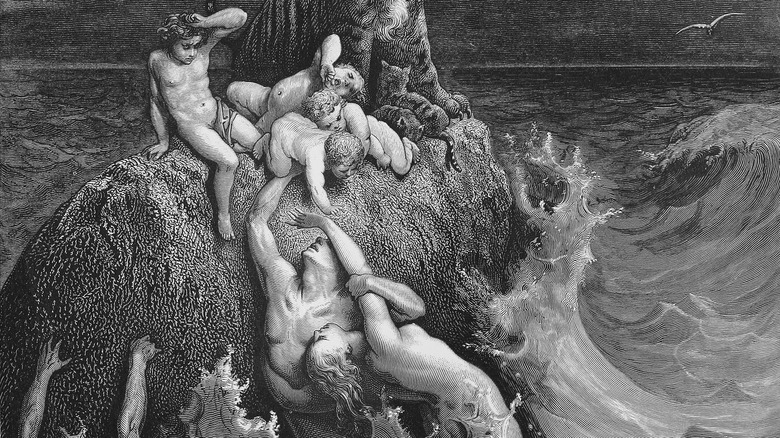The Interesting Truth About The Black Sea Deluge
The early life of Earth was filled with natural disasters as the atmosphere and climate of our planet developed and changed throughout prehistory. Some events, like major meteor strikes and volcanic eruptions, we know about, while others stay confined to theory. One such theory that remains controversial is the Black Sea Deluge, a potential flood that might have inspired the Biblical story of Noah's Ark (via Listverse).
Dr. Robert Ballard, who famously discovered the wreck of the Titanic, led a 1999 expedition that found signs of human-made structures at the bottom of the Black Sea in southeastern Europe. Mollusks and an ancient shoreline also discovered pointed to the fact that the saltwater sea was once a freshwater lake. This supported the "Black Sea Deluge" theory, which posits that the Mediterranean spilled over into the Black Sea with a force that could have inspired ancient tales of massive floods, not least of which the story of the 40 days and 40 nights of rain that led to the construction of Noah's Ark in the Bible. While some sort of flood likely occurred, new evidence points to it being less than Biblical.
The Deluge was probably less intense than previously thought
According to Woods Hole Oceanographic Institution, new evidence discovered in 2009 could discredit the Black Sea Deluge theory, or at the very least minimize its initial findings. About 9,400 years ago, the last Ice Age waned and sent large amounts of melted snow and ice into Earth's oceans. This caused the Mediterranean to spill over the natural dam and into the Black Sea, potentially creating a great flood. However, scientists now believe that the "ancient shorelines" originally discovered are actually just naturally eroded sand dunes. More current estimates put the original Black Sea's water levels some 16-32 feet lower than before the flood, a far cry from the 130-164 feet originally estimated in the late '90s. That is a sizable distance between potential floods: Current estimates would put the flooded area at about half the size of Rhode Island, with prior data pointing to an area the size of West Virginia.
Other techniques to more accurately measure the freshwater-to-saltwater changes in the Black Sea included another look at the mollusks found in the sediment. In 2007, only bivalve mollusks with the shells still attached were dated, as this meant they had not been disturbed by wave movements or erosion after their deaths. This backed up the more modest flood theory, which still would have had great implications for ancient Europe and Asia, but perhaps short of an ark.

